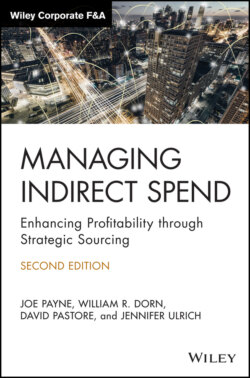Читать книгу Managing Indirect Spend - Joseph Payne, Joe Payne - Страница 51
Pricing Information
ОглавлениеWhen dealing with pricing information, start from the highest summary level you can and break the data down from there. The baseline price analysis should start with a recap of total spend (by supplier) for the category. If you have multiple suppliers, demonstrate the spend by each supplier separately and then provide a total.
Then, review the spend and see if it can be categorized by product or service type. For example, in a services baseline (such as maintenance for your HVAC systems), you might break out the spend to show how much represents scheduled maintenance and how much represents service calls. If your organization has multiple facilities, you may want to break out the spend by location as well.
The pricing analysis also includes a summary of ancillary or other incurred fees, such as minimum order penalties, fuel surcharges, and overtime charges. It is important to note not just what these charges are, but how often they are incurred and the reasons why they are incurred.
Next, summarize the current cost structure. Are you paying at a discount from a list price? Are you getting net prices across the board, specific to certain volumes or ordering patterns? Is pricing based on a markup structure by category?
Finally, provide a spreadsheet showing usage history and price point paid. Analyze the data to demonstrate ordering patterns, high volume items, and which products or services represent the most spend. All of this information will be used later on to develop a sourcing strategy. It can also help relay requirements to alternate vendors.
